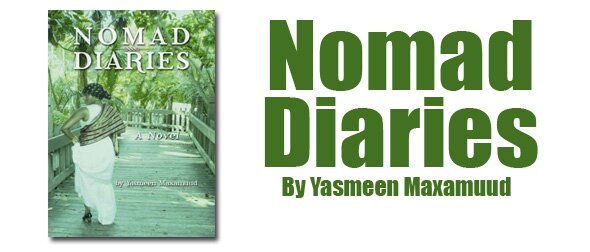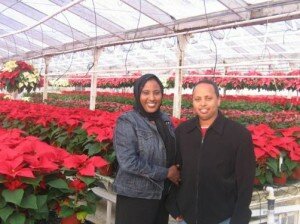 Yasmeen Maxamuud lives in San Diego, but she set her debut novel in Minneapolis because “when I visit, it feels like home,” she said.
Yasmeen Maxamuud lives in San Diego, but she set her debut novel in Minneapolis because “when I visit, it feels like home,” she said.
Maxamuud, who grew up in northern Somalia, has written “Nomad Diaries,” what may be the first attempt by a Somali woman to tell the story of her people in America through fiction. She is one of a growing number of native-African women fiction writers who are chronicling their culture’s history in English, whether it be homeland unrest or battling culture shock in a new world.
Maxamuud, 36, first visited Minneapolis in 2002, when she came to stay with friends and saw familiarity everywhere, from the names of Somali-owned stores to passersby on the sidewalks. She conducted focus groups of local Somalis as part of her pre-book research, and based central character Nadifo on the strong mothers she met.

Novelist Yasmeen Maxamuud, with her husband, Abdikarim Hassan, lives in San Diego but likes Minneapolis because “it feels like home.â€
“San Diego has a sizable Somali population, too, but Minnesota Somalis are unique,” she said. “It has to do with the environment, which is very welcoming to newcomers, an amazing opportunity for people who just came from war. They seem to thrive here better than anywhere else in America.”
The self-published novel interweaves the lives of several people, many of them from one family, from the horrors of war to emigration to efforts to reshape lives in a strange land:
• Middle-aged Cartan was once an important foreign minister. Now he feels lost and powerless in a new world where he can find only low-level employment.
• Teenaged Henna is gang-raped in Somalia, then shamed by her family for the resulting pregnancy. When they move to the United States, she defies them by wearing revealing clothes and going out with men from other cultures.
• Nadifo and her favorite son, Haybe, are at odds because they have experienced America completely differently: She wants him to be grateful to “nice white people,” mind his business and get a good education, while he is tired of unjustified traffic stops and being followed around department stores.
• Idil was only a baby when she came to Minnesota, so American culture is her primary culture. She just wants to take guitar lessons and listen to pop music, not be forced to take part in the traditions of her clannish parents and grandparents.
• The women of the “Cedar Springs” high-rise, a not-so-veiled takeoff on the actual Cedar Riverside apartment complex where many Somalis live, engage in elaborate social hierarchies (Maxammud laughingly dubs them “The Real Housewives of Cedar Springs”), making everyone’s business their business.
• In one home, a group of women finish their prayers to Allah, then find a child has let in a Jehovah’s Witness. Based on their own experiences, they suspect she is a government authority in disguise.
Reaction to the book has been mixed. To 15-year-old Abrar Salad of St. Louis Park, the novel reflected familiar faces and places, “summing up and tying together the many stories of Somalis in Minneapolis,” she said. “The family in the book reminds me of countless people.”
Salad said she could relate to the “double identity” that the children in the book faced, “preserving their Somali heritage while trying to fit in with American culture.”
Bodhari Warsame of Minneapolis, a Somali man in his 20s, thinks Maxamuud got some things “brilliantly right,” but also says that she emphasized stereotypes that don’t reflect reality. It would be helpful for non-Somalis to read the book in order to better understand the community, he said, but it shouldn’t be relied on for complete accuracy.
It’s a somewhat bumpy read, particularly for non-Somalis, but also an intriguing one. Because most Somalis are in the United States for a variation on the same reason, outsiders tend to see the community as monolithic. “Nomad Diaries” divides that mass into individuals, each with his or her own specific motivations, dreams, foibles and responsibilities.
______
Star Tribune







looks nice. i hope to see my fellow somalians involve in writing and publishing. Thanks Yasmin.